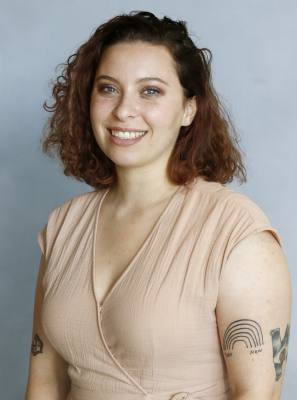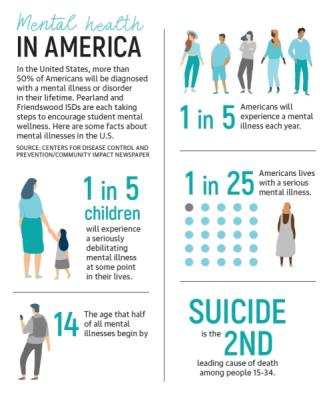For the 2018-19 school year, PISD brought on six student support counselors. Located at the junior high and high schools, the support counselors are part of an effort by the district to address the growing mental health challenges that students are facing, PISD Coordinator of Guidance Services Chenda Moore said.
Moore said the district found there was a necessity to support the emotional needs of students and staff, especially since other school counselors with a dedicated grade or campus are already overwhelmed.
“We saw that we needed to dedicate these counselors to only serving the emotional needs of the students and their parents,” Moore said. ‘We wanted to educate parents on how to work with the students beyond the school day.”
At Friendswood High School, Student Support Counselor Abygail Kinard said she wants to ensure the safety of all students.
“We build a foundation of trust and get the student’s parents involved as early as possible so that we can build wraparound supports for the student,” Kinard said.
Kinard said she wants all of the students to feel safe and supported and, as a counselor, wants to help them develop the coping skills necessary to face adversity and build resilience.
Similarly, Moore said a goal of Pearland support counselors is to educate children not just academically but also socially.
“There’s a lot of relationship issues, anger and anxiety,” Moore said. “Our kids are just more anxious about a lot of things these days, and they don’t know how to cope, so we need to teach them these positive coping mechanisms.”
The Centers for Disease Control and Prevention said one in five children will experience a serious mental illness at some point in their lives. Half of those mental illnesses begin by age 14.
Kinard also said she felt students were struggling more with isolation and anxiety.
“Most of the students express feeling overwhelmed and unable to cope with conflict or stress,” Kinard said. “They feel like they aren’t being included, or that their relationships aren’t authentic.”
According to the National Alliance on Mental Illness, 18.1% of American adults live with an anxiety disorder, and 6.9% live with major depression.
Kinard said that students often talk about their friends during meetings, and counselors are sure to follow up with any leads and ensure the students are safe with a support system.
Kinard said the goals of the counselors are to implement more proactive mental health education for the students and use evidence-based interventions in that effort.
In PISD, student support counselors have been tracking the number of visits they receive as well as the reason for the visits. This data collection allows the district as a whole to provide continuity of care as students move up through the schools by letting counselors check for previous visits from a student.
“Counselors are already seeing the benefits of being able to further support the students,” Moore said. “Additionally, we are able to determine the needs of students and provide professional development for counselors in relation to that.”
The data can also be used to plan activities for the students focusing on areas of need.
An important focus of student support counselors in PISD is preventing suicide and suicide attempts.
Moore said young people who are victimized or who have witnessed violence are more likely to experience suicidal ideation. She said everything they do is an effort to support the students so they are able to focus on academics and their future to their full potential.
“We want to promote that sense of belonging and safety at school in all of our students,” Moore said. “The idea of ‘see something say something’ is in place for every activity we involve our kids in.”
At Turner and Dawson high schools, a suicide-prevention task force was able to use the lunch hour for suicide-prevention education with the David’s Law curriculum, which teaches students how to seek help if they are struggling and to self-advocate.
“The goal of all of this is prevention,” Moore said. “I would love to do more prevention than intervention so that we can get involved before things get worse.”






